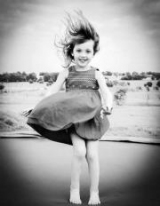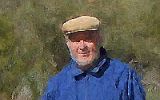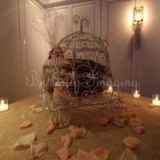- Forum
- Photography and Camera Forum
- Photo Galleries - For General Display or Critique
- Film Photography
- Fimm & Editing, Question from aControl Freak
Fimm & Editing, Question from aControl Freak
-
 Topic Author
Topic Author
- BrandyMaeD
- Has the Hang of it
-
- Canon Rebel T3
- Followers: 13
- Posts: 87
-
Points:
0
Post #254638
Here is my question, with film, where is the editing done? I'm a control freak and edit like crazy before sending my pics in. With film, aren't you taking a giant leap of faith? Do you need to develope yourself if you want complete control?
Thanks for answering my newb question! I know about the digital side but have't used film since I was in high school.
-

- KCook
- Photo Elder
-
- Canon EOS 50D and Olympus E-P5
- Followers: 1325
- Posts: 5410
-
Points:
32913
Post #254671
Kelly Cook
Post #254712
Developing B&W film is mostly being in complete darkness, opening the film cartridge, putting film in the tank with the chemistry, doing some agitating, etc. etc.To me the real fun and where you have control is making the prints. I had been using a shared darkroom at a local university where people in the community could join the art center - with the time constraints I got the film developed and did my own prints. Now I'm accumulating darkroom equipment to have a set-up eventually at home (the enlarger will be the biggest expense, the rest I'm finding at thrift store prices). Most places will just develop the film if you want to print your own.
The nice thing nowadays is being able to have your film scanned (or do it yourself) so I think it's possible to 'go digital' with it easily enough. It's possible to make digital negatives (negs from your digital images) as well but I haven't tried that. If you're interested in film you might look at www.filmphotographyproject.com - I don't know if I'll ever catch up on their podcasts but they do have some short tutorials that if nothing else aren't boring...
Sharon
-
 Topic Author
Topic Author
- BrandyMaeD
- Has the Hang of it
-
- Canon Rebel T3
- Followers: 13
- Posts: 87
-
Points:
0
Post #254715
-

- KCook
- Photo Elder
-
- Canon EOS 50D and Olympus E-P5
- Followers: 1325
- Posts: 5410
-
Points:
32913
Post #254737
35mm equipment is a whole lot cheaper, but 120 roll film is bliss to work with, compared to 35mm.
old school
Post #254758
I know people practice spooling film to get a feel for it - like using some exposed film to practice while watching TV - I suppose a roll that you messed up!! or part of a strip of film, one that you don't want the photos because it would get scratched handling it a lot. And when you're going to develop film you need to know exactly where everything is laid out to find it in the dark.
It would probably be a good idea to try it first, I don't know if there's an art center or university or anyplace that mght have a darkroom near you. Of course you could shoot film without needing to do your own developing.
I've managed to find a good bit of darkroom equipment at thrift store prices, it's just taking time to acquire items. I did just see that Lomography was selling some darkroom supplies/equipment, and there are camera stores that carry it.
I think a difference too using film is that what you get in camera, is what you get. I think it makes you more aware of getting your framing and composition the way you want it, getting the camera set for a good exposure, making sure the focus is accurate, etc.
Sharon
-

- KCook
- Photo Elder
-
- Canon EOS 50D and Olympus E-P5
- Followers: 1325
- Posts: 5410
-
Points:
32913
Post #254771
120 cameras with a fixed normal lens are dirt cheap on the used market. Really no reason not to have one. I have a "thing" for the old Twin Lens Reflex designs, still have both a Mamiyaflex and a Yashicamat. These TLR are more $$, but soooo sweet. Whenever I pick one of those up I feel Ansel Adams looking over my shoulder.
Back In The Day I did try a number of different "auto load" tanks. All of them were plastic, and none of them held up. Total waste of $$.
By all means any noob should use an established darkroom before plunking down his/her own $$ for an enlarger.
Kelly
Post #254778
Yeah I started by taking a course in B&W darkroom work at a local university. Although actually when I was young I got some darkroom experience but didn't really remember the specifics years later. I don't think it's hard once you know what to do, but it helped to have an instructor to show what to do.
I love when you slide the print into the developer and even with just the safelight on you know you got a good picture. Then of course there are the times you forget to turn off the enlarger light and as soon as you slide the paper into the chemistry, whoosh the whole piece of paper goes coal black.
Sharon
-

- Henry Peach
- Apprentice
-
- I currently use a 5DII or Sony Nex-3 most of the time.
- Followers: 50
- Posts: 2925
-
Points:
16
Post #254951
BrandyMaeD wrote: Here is my question, with film, where is the editing done? I'm a control freak and edit like crazy before sending my pics in. With film, aren't you taking a giant leap of faith? Do you need to develope yourself if you want complete control?
If you want to use the traditional film process (rather than scan and process and print from files) then yes, you will probably need to do the processing and printing yourself. Almost all photofinishing lab film processing from development to printing is done by automated machines that don't offer many control options compared to Photoshop or the traditional darkroom. Short of paying for custom film processing (not commonly available anymore) you are going to get what the machine spits out. In a good lab the printing tech will do minor corrections: color casts, exposure, etc... in the printing stage.
With digital we do all the processing in one step. With film the processing is done in two steps: development and printing. We have image adjustment controls in each step. Like digital processing there are many different ways to accomplish similar results in the traditional darkroom. BW offers a lot more options than color when it comes to control and image adjustment techniques. With BW it's just a matter of adjusting tonality. With color tonality adjustments can also affect hue. Meaning I want dark red, but when I try to burn it in the red also changes color slightly.
Look into the Zone System. It's a systematic way to test your gear, technique, and materials so you can control the results you get. Ansel Adams' books "The Camera", "The Negative", and "The Print" are the holy trilogy of the darkroom. Henry Horenstein's books "BW Photography, A Basic Manual" and "Beyond Basic Photography" are probably simpler to read, and a great place to start. You will recognize a lot of the terms from Photoshop (and similar photo editing software), because many image control techniques started in the traditional darkroom.
-

- Henry Peach
- Apprentice
-
- I currently use a 5DII or Sony Nex-3 most of the time.
- Followers: 50
- Posts: 2925
-
Points:
16
Post #254952
KCook wrote: And nice enlargers for printing are not cheap.
Yes they are! I see $1000+ enlargers going for less than $200 or even given away. New they are still quite expensive, but the same enlargers and lenses on the used market are going for about 10% of new.
KCook wrote: By all means any noob should use an established darkroom before plunking down his/her own $$ for an enlarger.
That is an excellent idea. It will teach about all the little things besides the enlarger that are needed: timers, trays, easel, safelight, thermometers, tanks, reels, measuring cups, jugs for mixing chems, etc... I can't even remember it all, but I've still got half my garage packed full of it, so I know there were a million little things I needed.
For 35mm Hewes brand metal reels (fit in standard metal tanks) are worth the extra money. They have these little prongs, and it's like they load themselves. I would also recommend trying medium format. Besides increased image quality I found the larger negs easier to handle and work with in the darkroom. Also the shorter rolls suit custom processing better.
-

- KCook
- Photo Elder
-
- Canon EOS 50D and Olympus E-P5
- Followers: 1325
- Posts: 5410
-
Points:
32913
Post #254987
The jobs I held that required darkroom work were back in the '60s, a very long time ago. Thus my memory is fuzzy. Underline work, I had to spend a lot of hours in the darkroom, so viewed that as a chore, not for fun. And I don't miss the smells one bit. I can still enjoy gazing at my little film camera collection (which I will never shoot with again). Cannot say I would enjoy gazing upon a big ole enlarger.
Kelly
-

- Henry Peach
- Apprentice
-
- I currently use a 5DII or Sony Nex-3 most of the time.
- Followers: 50
- Posts: 2925
-
Points:
16
Post #255077
KCook wrote: Hey Matt, wondered where you were!
Hi Kelly! Late summer weddings, new baby, trying to waste less time on the computer...
-

- Henry Peach
- Apprentice
-
- I currently use a 5DII or Sony Nex-3 most of the time.
- Followers: 50
- Posts: 2925
-
Points:
16
Post #255079
In the camera: aperture controls DOF, shutter controls how movement is rendered
polarizing filters saturate colors and make deep blue (dark toned) skies, grad ND filters to even out differences between foreground and sky
colored filters can be used with BW film to alter contrast relationships: dark red filter makes blue skies dark and red freckles disappear, a green filter darkens red lips and freckles, etc...
color correction filters for white balance
there are all sorts of other filters that can be used for effects in camera
exposure for lightness and darkness
exposure + development to control contrast range: over exp & under dev to lower contrast, under exp & over dev to increase contrast
In film development: developer type, concentration, temperature, how long, and what technique is used can alter contrast, grain size, and emulsion density.
In printing: enlarger design and lens choice can influence how the photo looks
cropping
global brightness/darkness
multi-grade filters or graded papers to control contrast
split-contrast printing
color filters for color balance
burning and dodging
pre-flashing paper
paper choice
print developer choice (temp, time, technique, etc...)
contrast masking, exposure masking, unsharp masking
After printing: toning, spotting, retouching, cropping, bleaching, painting, etc...
-

- butterflygirl921
- Master of the Lens
-
- Canon Rebel EOS T1i 500D Canon 60D
- Followers: 160
- Posts: 1553
-
Points:
0
Post #255112
-

- Henry Peach
- Apprentice
-
- I currently use a 5DII or Sony Nex-3 most of the time.
- Followers: 50
- Posts: 2925
-
Points:
16
Post #259969
butterflygirl921 wrote: I think all good photographers should do film some point in their lives. It is truely the basics
I think all good photographers should have to haul a darkroom out into the field, coat their own glass plates, and develop them within moments of exposure. Or at least inhale mercury vapors while making Daguerreotypes. Now those are the basics!
- Forum
- Photography and Camera Forum
- Photo Galleries - For General Display or Critique
- Film Photography
- Fimm & Editing, Question from aControl Freak
Latest Reviews
Nikon’s retro-looking Nikon Zfc is anything but retro. Under its classic body is a host of features and amenities that make it a worthwhile compact mirrorless camera for 2024.
The Canon EOS R50 is one of the newest R-system cameras from Canon. Is it worth your money? Find out all the details you need to know in this comprehensive review.
The Sony FE 70-200mm f/2.8 GM OSS II is Sony’s flagship mirrorless zoom lens. As such, it’s loaded with features and has a top-shelf build quality that makes it a top pick!
The Leica SL2-S is an attractive, premium mirrorless camera with photo and video specs that are sure to impress. And with the legendary Leica name, you know this camera exudes quality!
Latest Articles
Blue hour photography might not be as well known as golden hour photography, but it is every bit as good a time to create epic images of landscapes. Learn how in this quick tutorial!
Nikon’s retro-looking Nikon Zfc is anything but retro. Under its classic body is a host of features and amenities that make it a worthwhile compact mirrorless camera for 2024.
Moving from taking snapshots of your dog to creating beautiful images doesn’t have to be that difficult! Use the tips outlined in this dog photography guide, and you’ll get better results in no time.
Acrylic print photos are a beautiful way to display your favorite images. But they don’t come without some questions. Get all the answers you need about this medium in this guide!
Where do you get your landscape photography inspiration? Is it from masters like Ansel Adams? Or perhaps viewing art from other genres? We’ve got these and a few other sources for you to check out!
The Canon EOS R50 is one of the newest R-system cameras from Canon. Is it worth your money? Find out all the details you need to know in this comprehensive review.
Too often, affordable online printing companies don’t meet your expectations of what a print should look like. But there are some choices that combine affordability with superb quality!
Self-critique is an important component of your journey to improving as a photographer. Use these simple tips about critiquing your work as a means to make faster progress with your art.














